[section label=1. Introduction]
Unleash the Devil
Last week we were blessed with the opportunity to check out MSI’s R9 270 Gaming, which is an excellent variant of AMD’s recently introduced Radeon R9 270 and this week we’ll be checking out a brand new graphics card from PowerColor, the Devil R9 270X. While the Radeon R9 270X and its variants have been released several weeks ago, PowerColor’s cards were unfortunately missing from AMD’s initial launch, but for those of you who waited, you’ll have the option of getting what may possibly be the best R9 270X variant out there.
Today we’ll be reviewing the PowerColor Devil R9 270X. As you may expect, the PowerColor Devil R9 270X is quite a special variant of the R9 270X as it comes with a host of features catering to the enthusiast crowd. Among the features we get PowerColor’s aggressive custom triple fan four heatpipe cooling solution, which PowerColor claims will provide 17% more airflow, 18% reduction of noise and 25% lower temperatures compared to the reference cooling solution. PowerColor has also implemented what they call the Platinum Power Kit, which is their 7+1+1 digitally controlled power delivery system. PowerColor claims that the Platinum Power Kit aids in higher overclocking potential, provides an additional 20% boost in stability as well as 30% better power efficiency. Of course, what’s all that without an overclock from the factory, right? As such, the Devil R9 270X boasts core clocks of 1080MHz (30MHz faster than reference) and carries a memory clock of 1400MHz (5.6GHz effective).
Ready to see the beast PowerColor has unleashed? Let’s take a closer look!
Specifications
| GPU | AMD Radeon R9 270 | AMD Radeon R9 270X | PowerColor Devil R9 270X |
|---|---|---|---|
| Codename | Curacao Pro | Curacao XT | Curacao XT |
| Fabrication | 28nm | 28nm | 28nm |
| Core Clock | 900MHz Base / 925MHz Boost | 1000MHz (Base) / 1050MHz (Boost) | 1000MHz (Base) / 1080MHz (Boost) |
| Stream Processors | 1280 | 1280 | 1280 |
| Texture Units | 80 | 80 | 80 |
| ROPs | 32 | 32 | 32 |
| Memory Buffer Size | 2GB GDDR5 | 2GB GDDR5 | 2GB GDDR5 |
| Memory Interface | 256-bit | 256-bit | 256-bit |
| Memory Frequency | 1400MHz (5.6 GHz Effective) | 1400MHz (5.6 GHz Effective) | 1400MHz (5.6 GHz Effective) |
| Additional Features | Mantle | Mantle | Mantle, Platinum Power Kit, Triple Fan Cooler |
[section label=2. A Closer Look (Exterior)]
A Closer Look at the PowerColor Devil R9 270X
Here’s a look at the packaging for the PowerColor Devil R9 270X.
Included in the packaging we get some documentation, a driver disk, possibly the most old school beige DVI to VGA adapter, mini-DisplayPort to DisplayPort adapter, a mousepad, and the Devil R9 270X itself.
Here’s a look at the PowerColor Devil R9 270X. The card is a 10″ long monster that features a 3-fan heatsink/fan configuration with two 80mm fans and a single 90mm in the center. Like a number of other vendors out there, PowerColor has gone with the red/black theme with their graphics card, but unlike most vendors, the heatsink/fan assembly is constructed completely of metal, which is extremely high quality and unfortunately makes the card quite heavy. In order to support the weight, PowerColor also includes a full metal backplate which adds the necessary rigidity to keep the card’s PCB from sagging under the massive heatsink’s weight.
I/O options include two mini-DisplayPorts, a HDMI port, and two DVI ports. The Devil R9 270X requires two 6-pin PCIe power connectors, which give it a theoretical maximum power draw of up to 225w (PCIe slot and 2x 6-pin PCIe power connectors).
[section label=3. A Closer Look (Interior)]
A Closer Look at the PowerColor Devil R9 270X
Removing the heatsink/fan assembly, we can take a closer look at the components onboard. Curiously, PowerColor has not included any sort of thermal pads for the VRAM. This could be a problem for those looking to significantly overclock the memory. Closer inspection of the Devil R9 270X’s cooling shows that it’s handled by four 6mm heatpipies, which should easily cool the R9 270X core. One thing I noticed is that the heat exchange plate could be better machined as there are tons of scratches and imperfections on the plate. While the thermal interface will make up for the mediocre machining, it’s still preferred to see a nice smooth heat exchange plate to facilitate better cooling especially since we’re dealing with PowerColor’s ultra premium series of graphics cards.
Here’s a look at the AMD R9 270X’s Curacao XT GPU. The AMD R9 270X is essentially a tweaked version of the Pitcairn GPUs from last year’s HD 7000 series, but it still packs a serious punch especially at the pricepoint it retails at. PowerColor also includes 2GB of GDDR5 memory is handled by eight packages of Elpida W2032BBBG-6A-F GDDR5 modules running off a 256-bit memory interface.
Power delivery is handled by PowerColor’s Platinum Power Kit, which is their marketing name for the 7+1+1 digital power delivery system onboard. The system is controlled by a CHIL CHL8228C digital voltage regulator. According to PowerColor, the digital PWM is capable of up to 90% efficiency.
Here’s a look at the connectors as well. PowerColor is using shielded connectors on the Devil R9 270X, which reduces interference between the ports.
[section label=4. Testing Setup]
PowerColor Devil R9 270X Performance
Testing Setup
Ivy Bridge Test Bench
| CPU | Intel Core i5 3570K |
|---|---|
| Motherboard | Gigabyte Z77X-UD3H |
| Memory | Kingston HyperX Genesis 16GB DDR3 2133MHz |
| Graphics | N/A |
| Boot Drive | OCZ Vertex 4 128GB SSD |
| Storage Drive | Western Digital Caviar Green 3TB |
| Power Supply | Corsair HX650 |
| Case | HSPC High Speed Tech Station |
| Optical Drive | ASUS OEM DVD Drive |
| Operating System | Windows 7 Ultimate x64 SP1 |
Special thanks to Gigabyte, Kingston, OCZ Technology and HSPC for sponsoring our test bench!
Initial Boot
[section label=5. 3D Mark]
PowerColor Devil R9 270X Performance
3D Mark
The new 3D Mark, now referred to as just 3D Mark, is Futuremark’s latest update to the popular 3D Mark series of benchmarks. The updated 3D Mark now includes multiple benchmarks for cross platform support as well as updated graphics to push the latest graphics cards to their limits.
[section label=6. 3D Mark 11]
PowerColor Devil R9 270X Performance
3D Mark 11
3D Mark 11 is an extremely popular benchmark designed by Futuremark for the sole purpose of stress testing a system’s graphics performance. Trusted by hardware enthusiasts and gamers world wide, 3D Mark 11 uses the latest features of DX11 to stress test graphics performance with consistent loads which simulate in game performance.
[section label=7. Unigine Heaven]
PowerColor Devil R9 270X Performance
Unigine Heaven v4.0
Unigine Heaven is another DX11 benchmark that stresses the graphical processing capabilities of the GPU using the advanced UNIGINE engine.
[section label=8. Lost Planet 2]
PowerColor Devil R9 270X Performance
Lost Planet 2
Despite being released by Capcom in 2010, this third person shooter is still a staple in many gaming benchmark suites. Featuring a vast world, detailed environments, and stunning effects, Lost Planet 2 can still be more than a handful for even many of today’s mid range graphics cards.
For our benchmarking today, we’ll be using the “Test A” preset in the Lost Planet 2 benchmarking utility.
[section label=9. Shogun 2: Total War]
PowerColor Devil R9 270X Performance
Shogun 2: Total War
Shogun 2: Total War is the most recent installment of the long running Total War series. Capable of using DX11’s features, it’s the perfect benchmark to test for the gaming performance. For our testing today, we’ll be using the Shogun 2: Total War benchmark utility.
[section label=10. Crysis 2]
PowerColor Devil R9 270X Performance
Crysis 2
As the successor to Crysis, which was hailed as the most graphically intensive game of all time when it was released in late 2007, Crysis 2 is less graphically demanding than its predecessor, but still one of the most graphically challenging games of all time. You simply can’t take a step in Crysis 2 without stepping into some intense tessellation. Combined with rich lighting, insane physics, and oodles of post processing, Crysis 2 requires a ton of graphics muscle to run.
Today, we’ll be benchmarking Crysis 2 in the map “Central Park” with the Adrenaline Crysis 2 Benchmark Tool.
[section label=11. Metro 2033]
PowerColor Devil R9 270X Performance
Metro 2033
Similar to Crysis 2, Metro 2033 is extremely tessellation intensive and fills the ranks as one of the most graphically intense games of all time.
Today, we’ll be benchmarking Metro 2033’s Frontline map using the Metro 2033’s included Benchmark Utility.
[section label=12. Sleeping Dogs]
PowerColor Devil R9 270X Performance
Sleeping Dogs
Released in 2012, Sleeping Dogs is an open world action-adventure title based on the infamous Hong Kong triads. With an open world environment, fast paced action and excellent graphics, Sleeping Dogs makes for a perfect test of graphics card capability. For our benchmarking today, we’ll be using Adrenaline’s Action Benchmark Tool.
[section label=13. Hitman: Absolution]
PowerColor Devil R9 270X Performance
Hitman: Absolution
Hitman: Absolution is a action adventure game released in late 2012 which focuses on the hitman, Agent 47, and his assassination missions. After a 6 year hiatus, the Hitman series is back in full force with updated graphics based off the developer, Square Enix/IO Interactive’s Glacier 2 engine. For our benchmarking today, we’ll be using Adrenaline’s Action Benchmark Tool.
[section label=14. Battlefield 3]
PowerColor Devil R9 270X Performance
Battlefield 3
Possibly one of the most highly anticipated FPS games of 2012, Battlefield 3 is currently one of the most graphically intensive games developed on the incredibly well crafted Frostbite 2 engine. With its detailed models, amazing physics, excellent use of shaders, and stunning effects, it easily makes it into our list of the best looking games ever created.
Our benchmark will be run in the map Operation SwordBreaker during the first fight scene. We’ll be using FRAPS to record a 60 second clip, which includes making this van up here explode.
[section label=15. Battlefield 4]
PowerColor Devil R9 270X Performance
Battlefield 4
Only a year after the initial release of Battlefield 3, the team at DICE went back to the drawing board to introduce their latest and greatest modern combat shooter, Battlefield 4. Based off DICE’s all-new Frostbite 3 engine, Battlefield 4 brings a new level of realism to the world of PC and console gaming with an unparalleled level of visual immersion, realistic character animations, and physics driven dynamic environments.
For our benchmarking, we’ll be doing a benchmark on a 60 second run of the game at the beginning of the Tashgar mission. While this scene doesn’t involve any firefights, it’s a very graphics intensive scene that involves a fast moving drive through the hills of Tashgar, which makes heavy use of the Frostbite 3’s motion blurring, depth of field, particle effects, and real time lighting engine.
[section label=16. Power Consumption and Temperatures]
PowerColor Devil R9 270X Performance
Power Consumption
For power consumption testing, we’ll be measuring full system power while idle along with full system power with the graphics card running at full load using Furmark. All power consumption measurements will be measured with the Extech 380801 Power Analyzer.
Temperature Testing
For temperature testing, we’ll be measuring both graphics card temperatures when the graphics card is idle for 5 minutes after a cold boot. Load temperatures are taken after a full 30 minute burn using Furmark.
[section label=17. Software & Overclocking]
PowerColor Devil R9 270X Software & Overclocking
Unfortunately since PowerColor doesn’t bundle any sort of GPU tweaking software, we’ve resorted to using AMD’s bundled OverDrive utility included in the Catalyst driver suite. By increasing the power control settings to +20, we were able to get a modest overclock up to 1200MHz core and 1550MHz memory. Unfortunately, we weren’t able to drive it much farther than that without visual artifacting or system instability. The Devil R9 270X does not include any sort of unlocked voltage control.
3D Mark Performance
With our very modest 11% core/11% memory overclock, we only saw a mere 1% performance gain in 3D Mark’s FireStrike benchmark.
Power Consumption
Unlike the R9 270 we tested last week, the R9 270X has plenty of power to spare with a maximum theoretical of 225w, but without manual voltage controls, it’s impossible to increase the voltages to reach potentially higher clock speeds (which include higher power draw). That said, our small 11% overclock on the core/memory did result in an increase of 17w additional power draw under load.
Temperatures
With a three fan, four pipe, 10″ long aluminum heatsink, you’re bound to get some great thermals and the Devil R9 270X was able to deliver a consistent 65ºC with and without any overclocking. It seems like PowerColor ramps up the fans a bit at 65°C to ensure the graphics card stays at that maximum at all times although you don’t really hear the fans too much since the R9 270X GPU doesn’t really get all that hot.
[section label=18. Conclusion]
PowerColor Devil R9 270X Conclusions
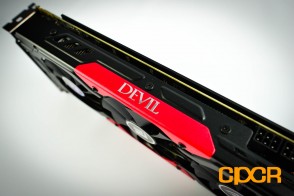 Alright, so with testing out of the way, let’s put some closing thoughts on this…
Alright, so with testing out of the way, let’s put some closing thoughts on this…
First, let’s talk about the AMD R9 270X. It’s pretty clear that the Radeon R9 270X’s Curacao core is just a re-brand of the same Pitcairn core used off the Radeon HD 7800 series. This sucks in a way since it’d really be pretty cool to see a Hawaii based ~$200 GPU this holiday season, but it’s understandable since the HD 7870 was already a strong performer and with the tweaks AMD is making to the Pitcairn/Curacao core on the R9 270X, it’s probably the fastest, most refined Pitcairn cores we’ll ever see on the market. Bundle that in with the fact that AMD is doing all they can with the R9 290/290X to be competitive on the high end with Nvidia, it’s no surprise that we get a re-branded Pitcairn core for the R9 270 series. Considering AMD hasn’t moved to GCN 2.0 architecture for any of the Hawaii cards (just power efficiency upgrades) thus far, I can definitely see AMD skipping Hawaii altogether on their mid/mid-high tier cards and jumping into a GCN 2.0 based GPU for their R10 series if that ever comes about.
As for PowerColor’s Devil R9 270X implementation, I’d have to say I’m a bit spoiled with this one. Prior to the Devil R9 270X, I’ve actually never had any experience with PowerColor’s Devil series cards, but I’d have to say I’m very impressed with what they’ve done. Not only does it look good, but PowerColor is also using quality components as well. From the all-metal heatsink/fan assembly to the all-metal backplate to the 7+1+1 digital power delivery system, PowerColor has really made the Devil R9 270X the budget enthusiasts’s wet dream. Then again with a card called the Devil, you’d expect it to be pretty damn good. Those looking to spend less than $250 to play games at 1920×1200 or lower, the Devil R9 270X is a solid choice.
Overclockers will probably be a bit saddened to hear that we weren’t able to get the Devil R9 270X that much faster than the stock clocks. We were able to get it to 1200MHz core and 1550MHz memory from the 1080MHz core/1400MHz memory stock clocks, which is a decent ~11% jump but it’s definitely no huge leap like we saw from the standard R9 270. I think the main problem here is that the Devil R9 270X is missing unlocked voltage controls. Without them, it’s difficult to take advantage of the fact that the R9 270X has that extra 75w of power available in comparison to the R9 270. That said, based off what I’ve seen from various reviews around the web regarding the R9 270X on cards from different vendors, the 1200-1250MHz point is generally the maxout point for most of these R9 270X’s with or without any voltage control.
Pricing on the PowerColor Devil R9 270X is $239.99, which is pretty expensive at around $40 more than the vanilla edition of the R9 270X. That said, like the R9 270X being the most refined version of the Pitcairn architecture, the Devil R9 270X is one of the most refined variations of the R9 270X on the market thus far. So, here’s the TL;DR. If getting the best R9 270X right out of the box (high quality appearance, high quality build and high overclocks) appeals to you, then the Devil R9 270X is something you definitely have to check out. If not, well there are plenty of R9 270 or R9 270X options out there for less.
Sample provided by: PowerColor
Available at: Newegg

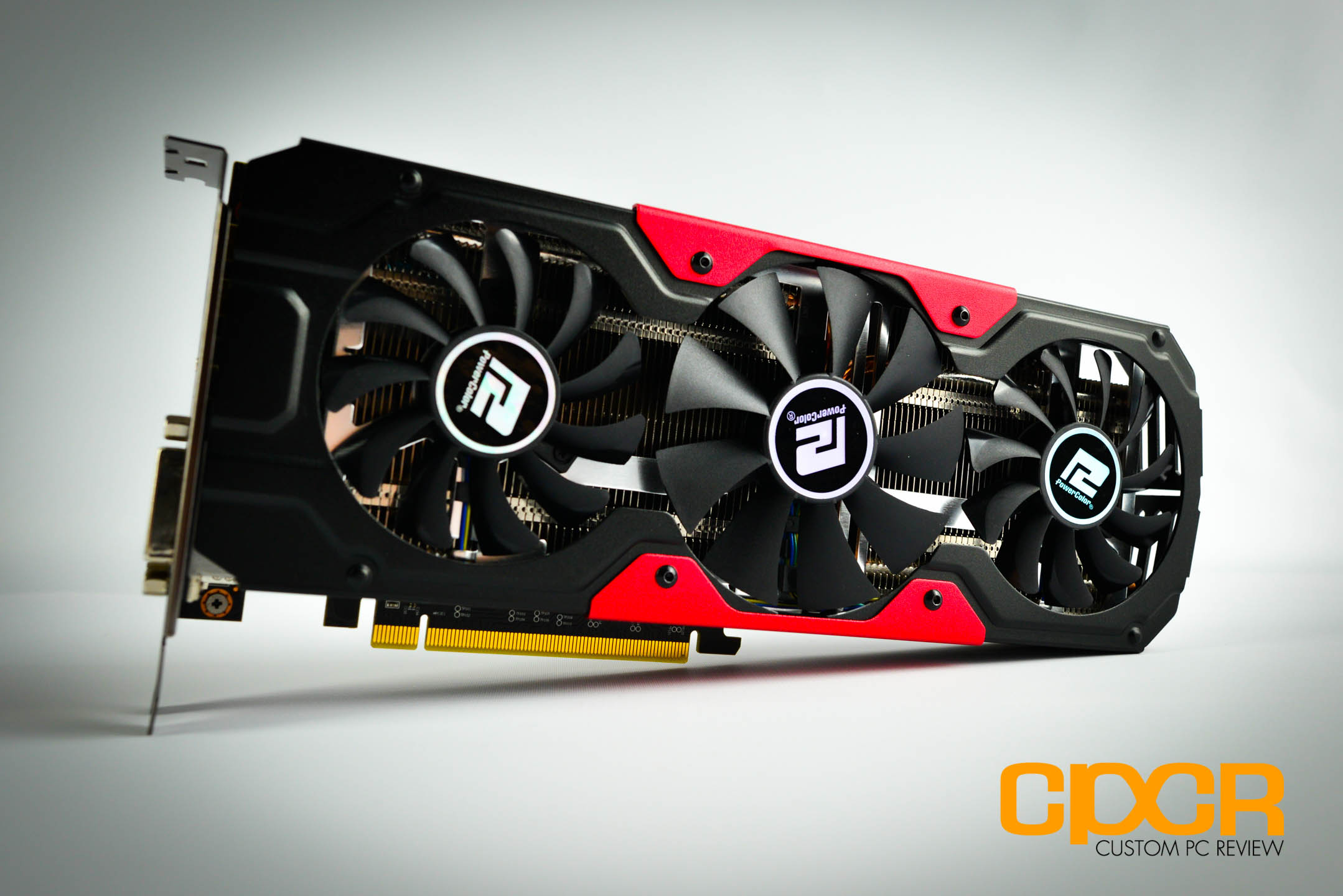
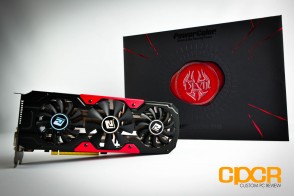
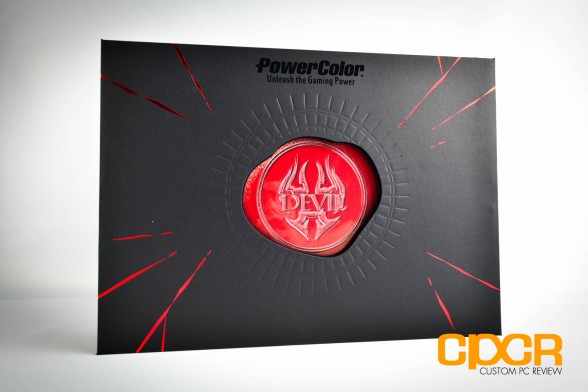
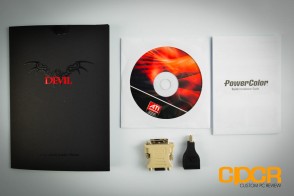
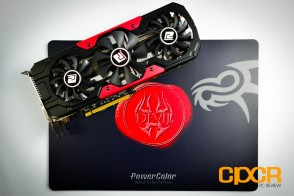
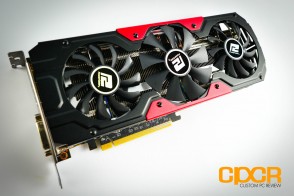
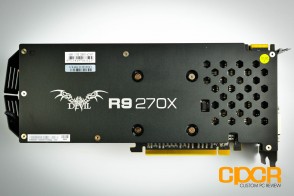
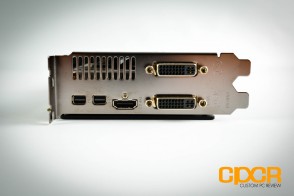
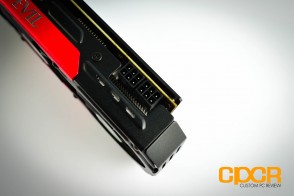
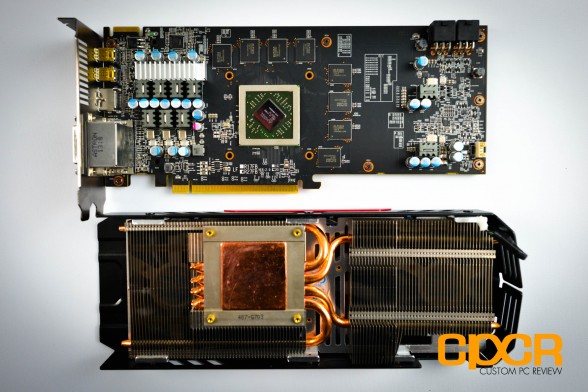
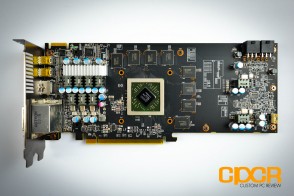
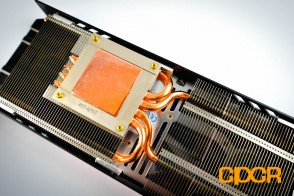
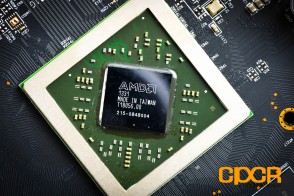
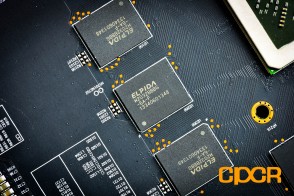
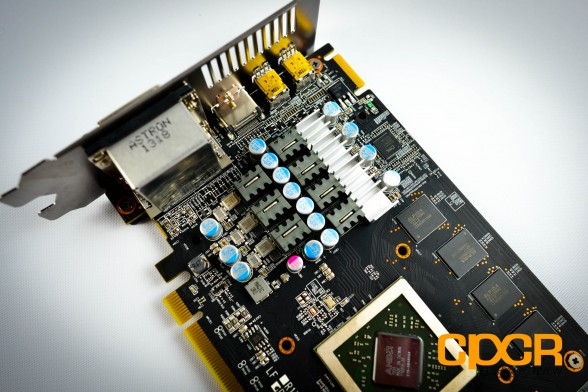
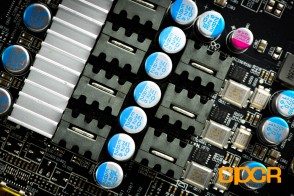
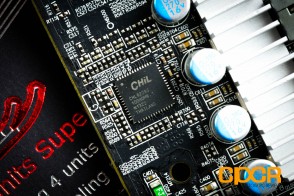
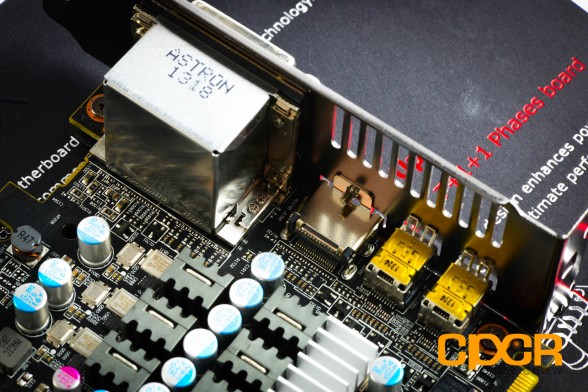
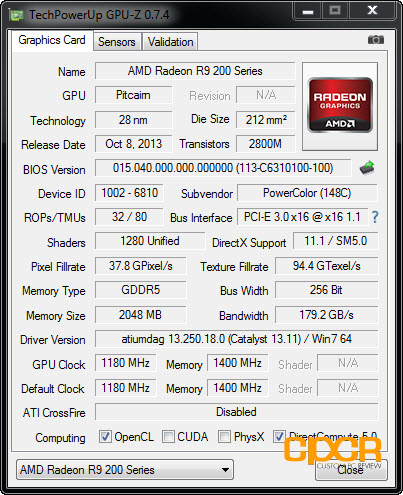
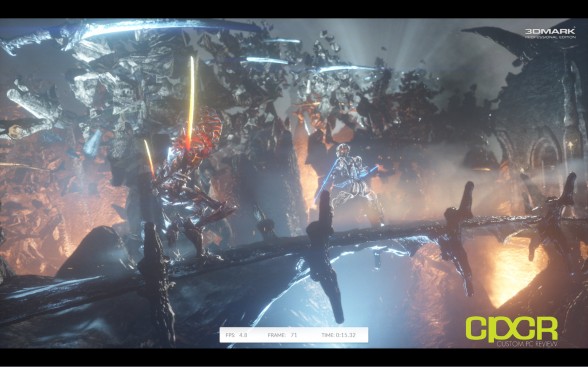
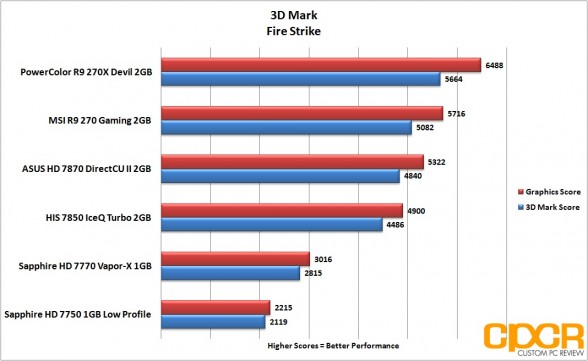
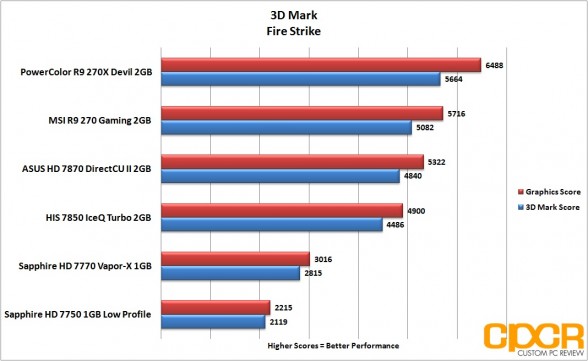
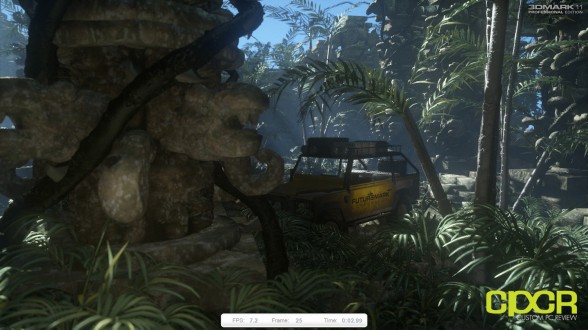
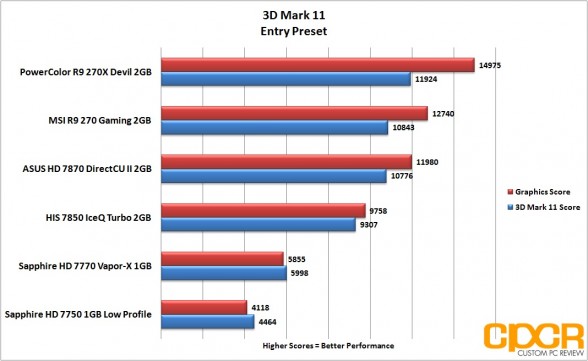
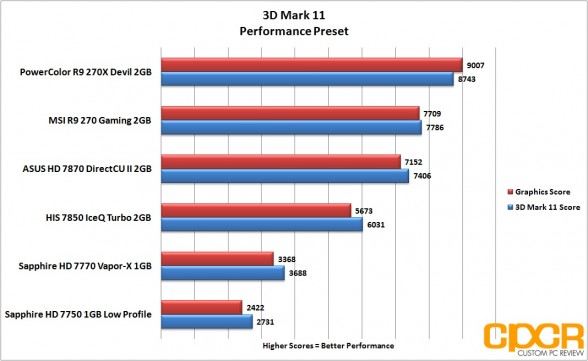
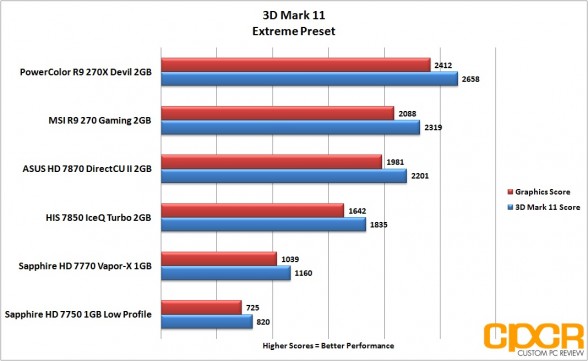

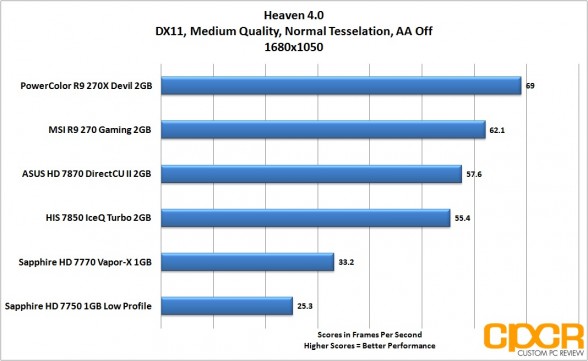
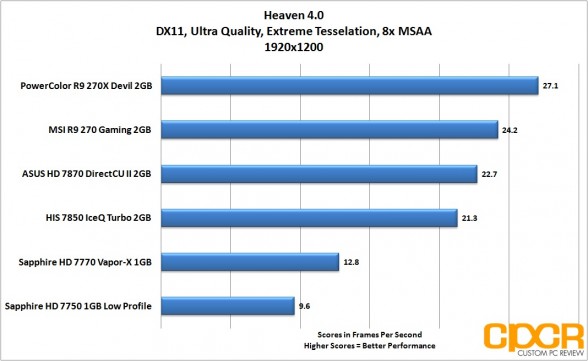
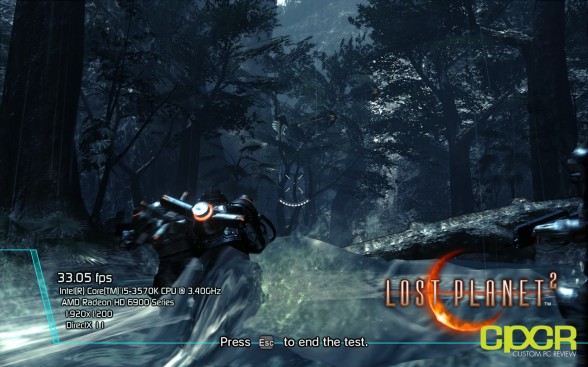
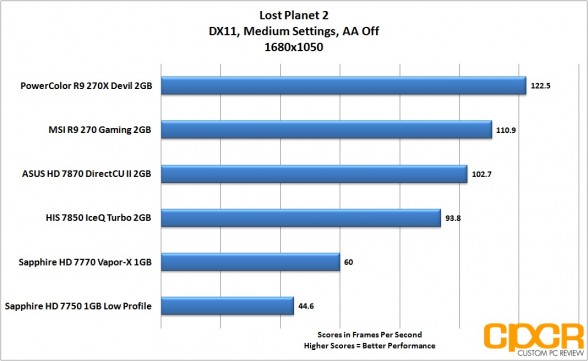
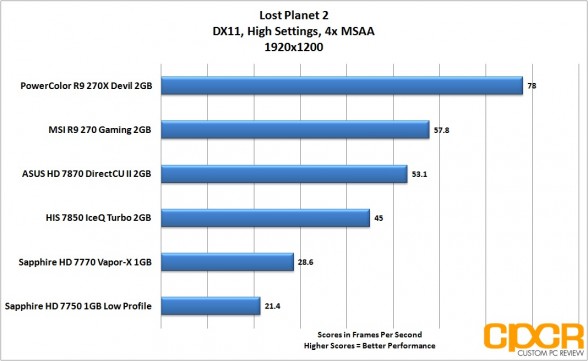
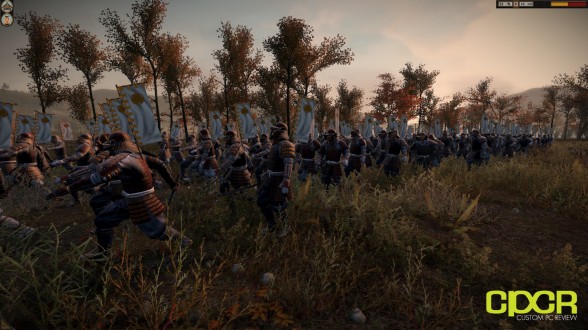
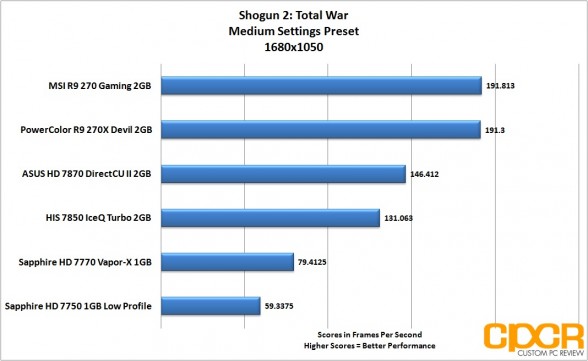
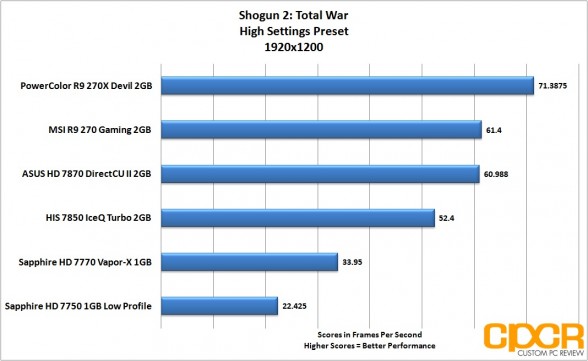
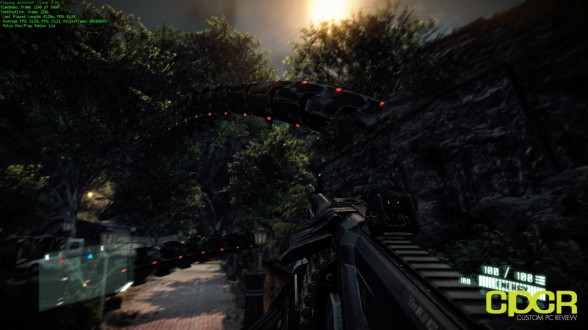
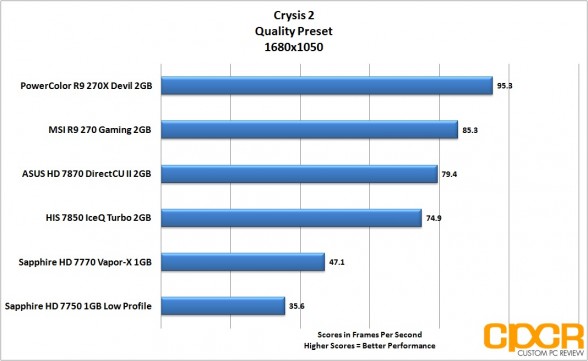
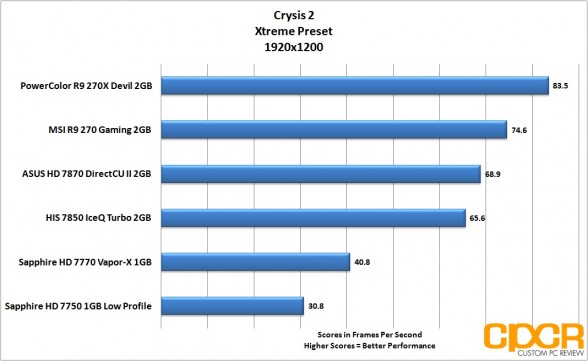
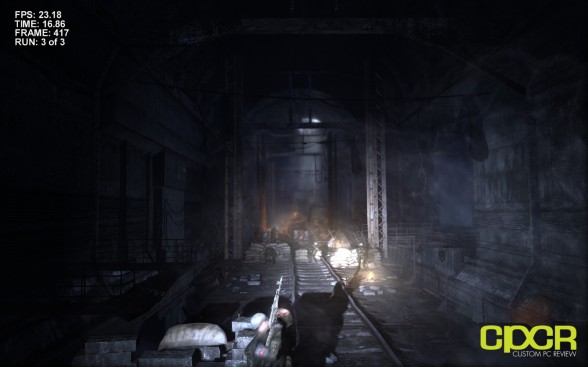
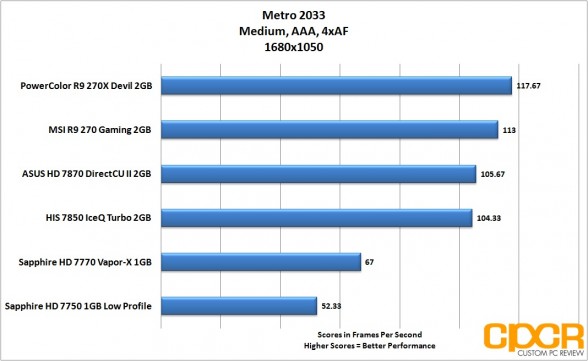
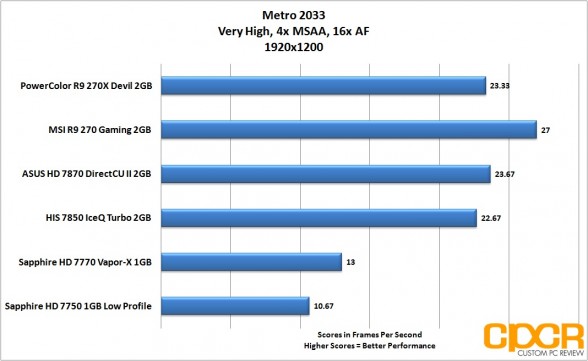
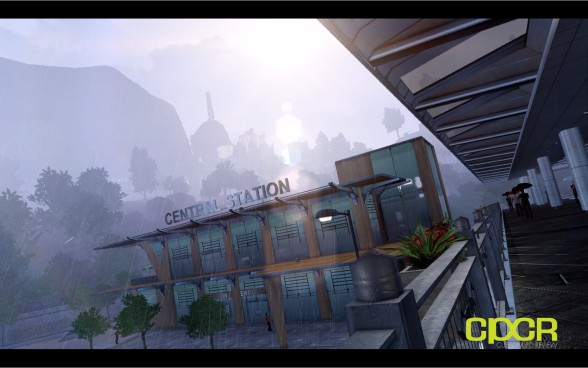
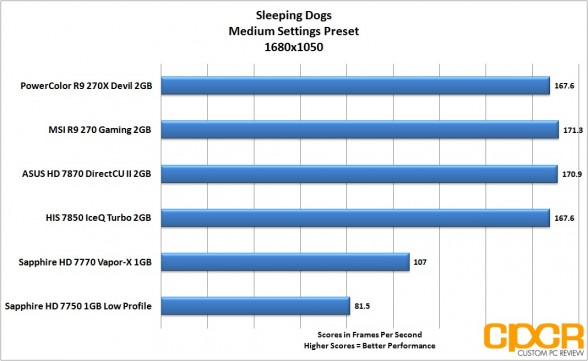
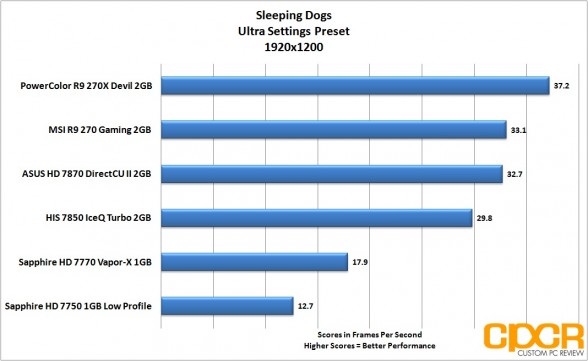
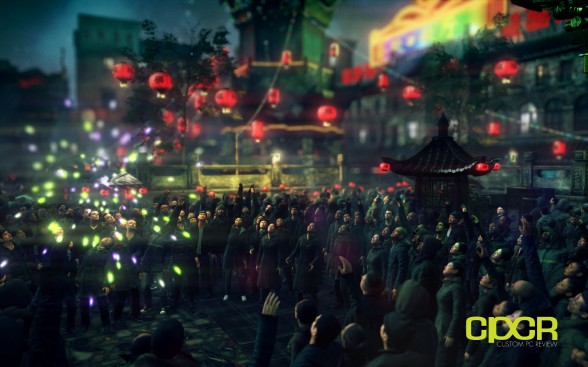
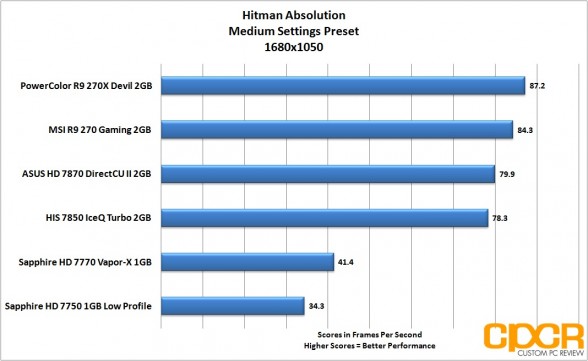
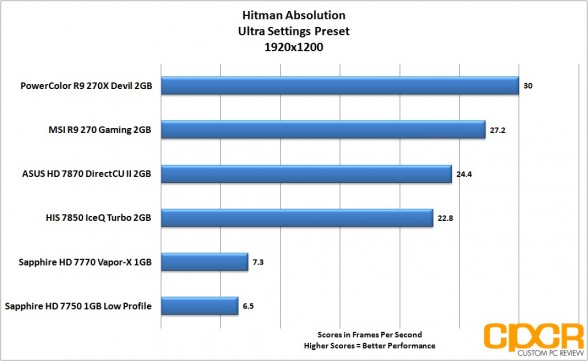
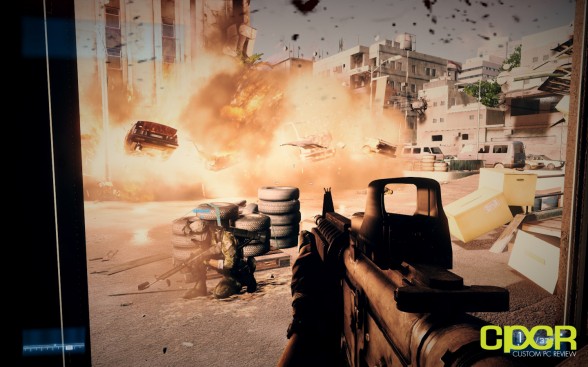
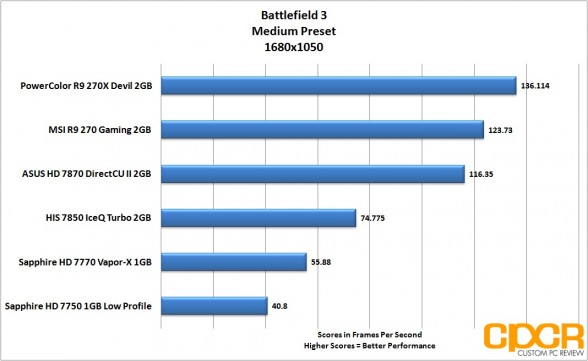
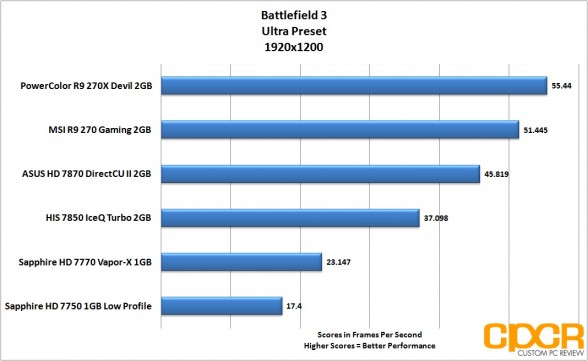

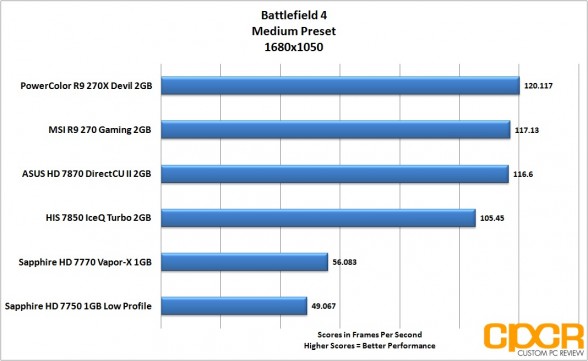
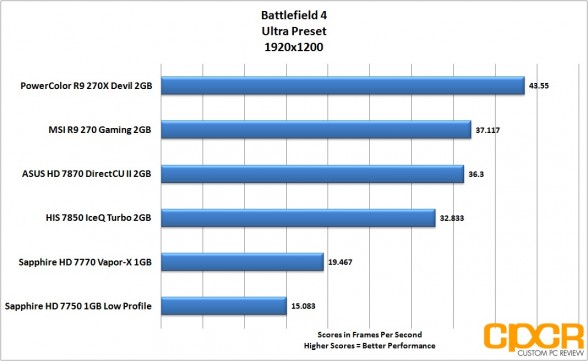
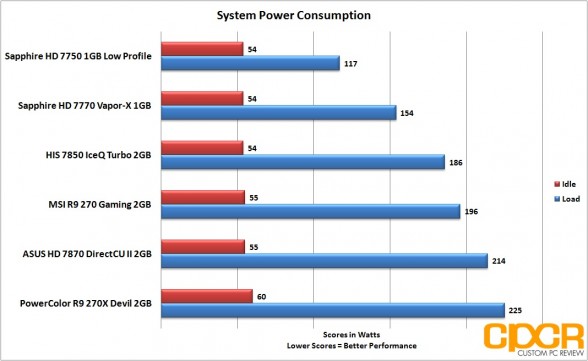
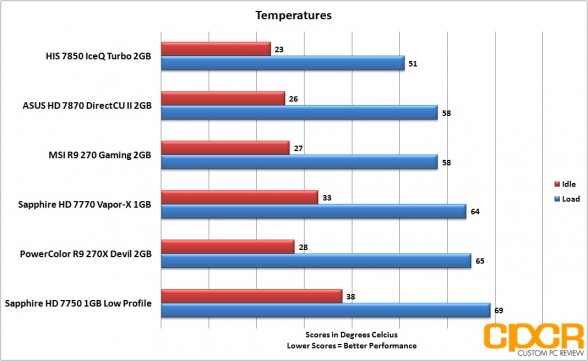
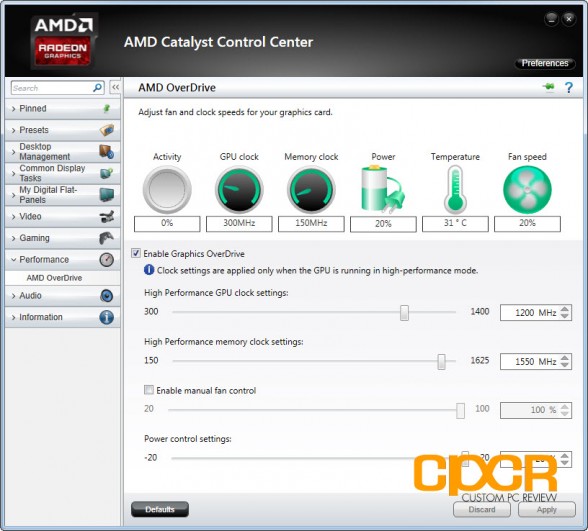
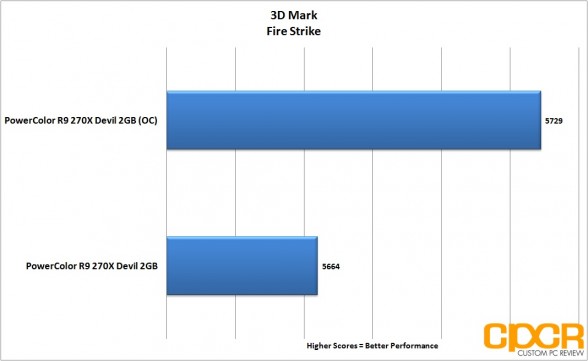
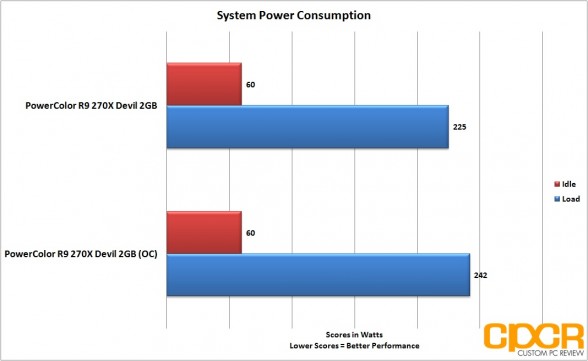
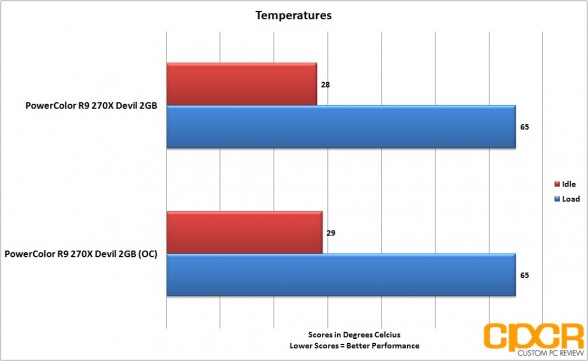
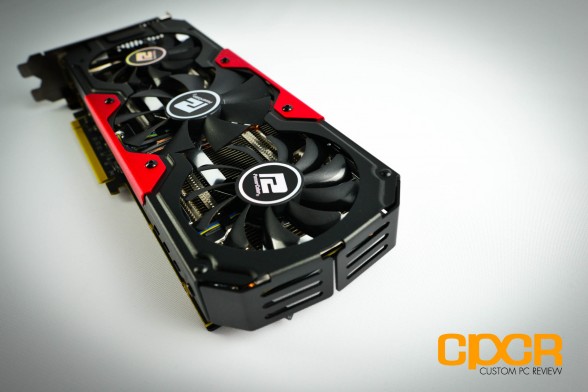

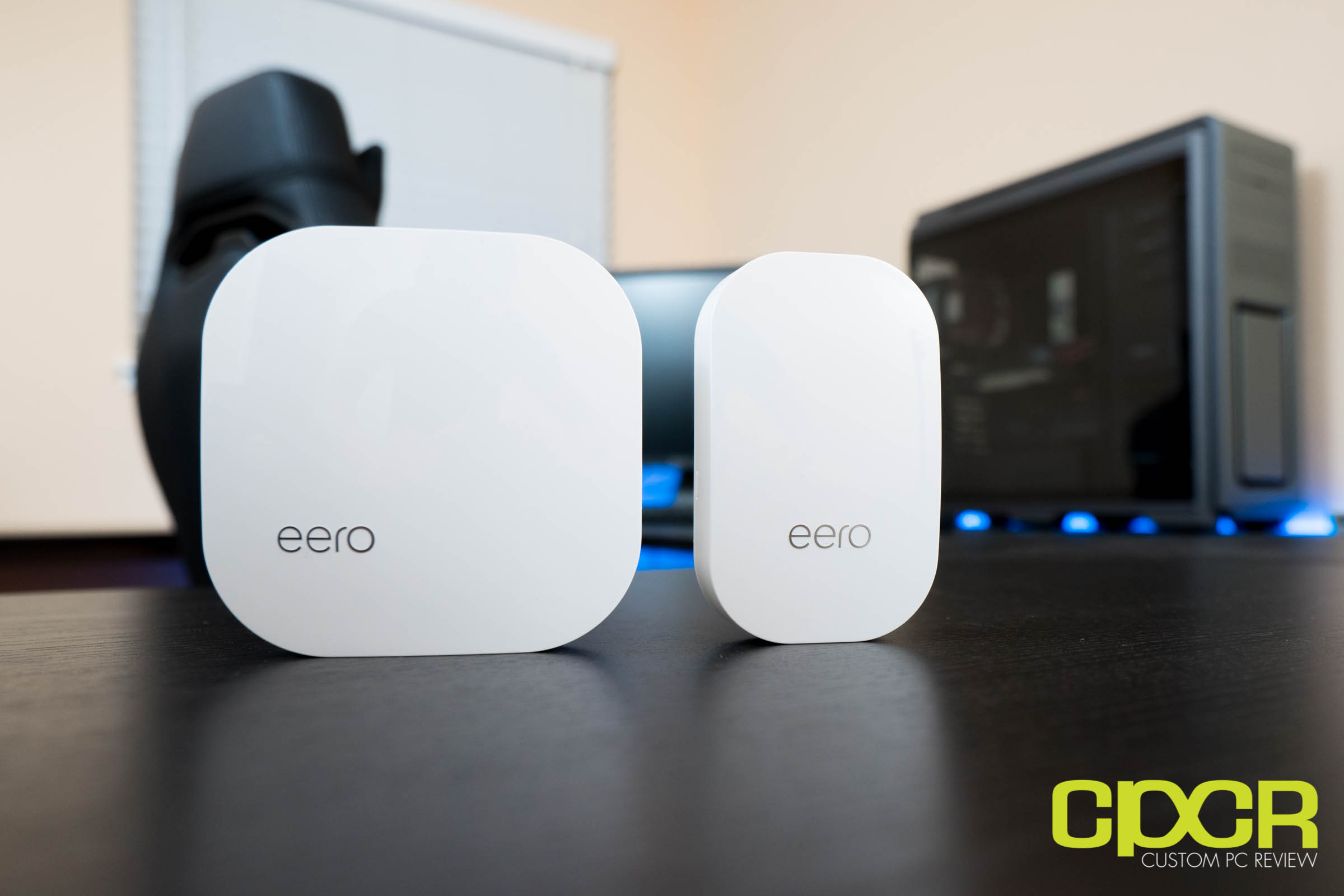
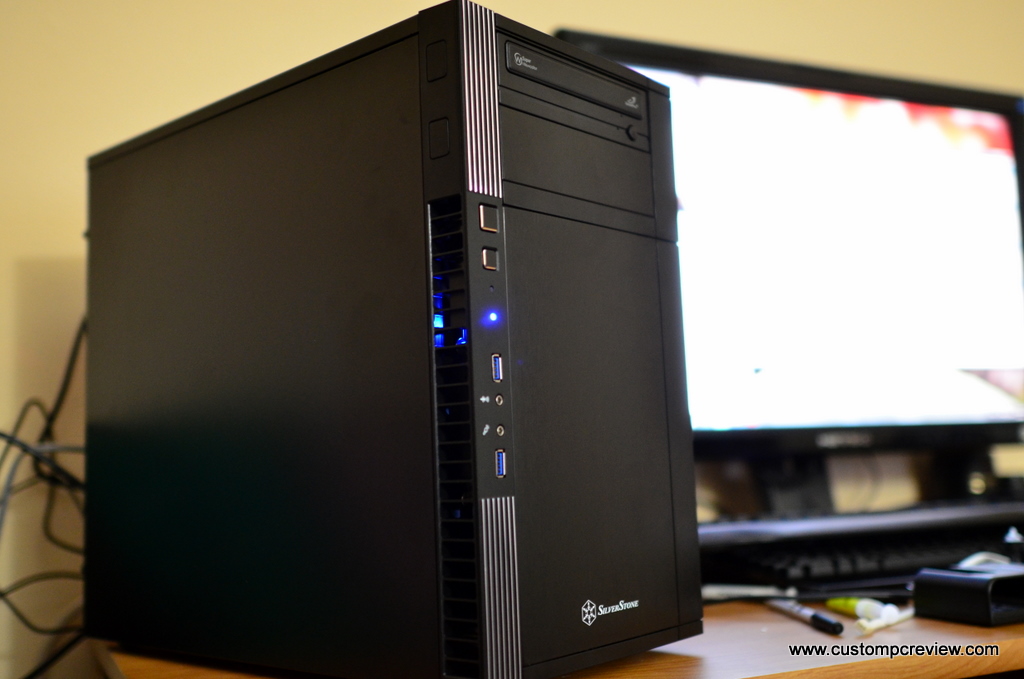
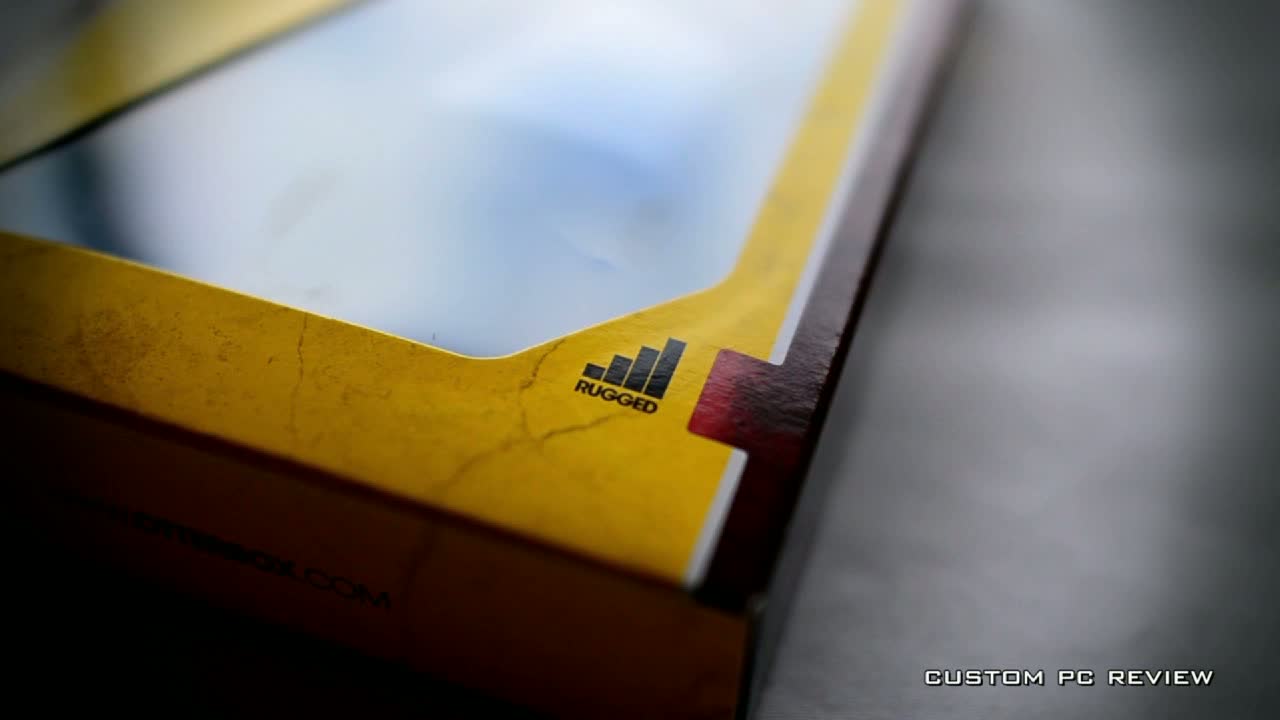
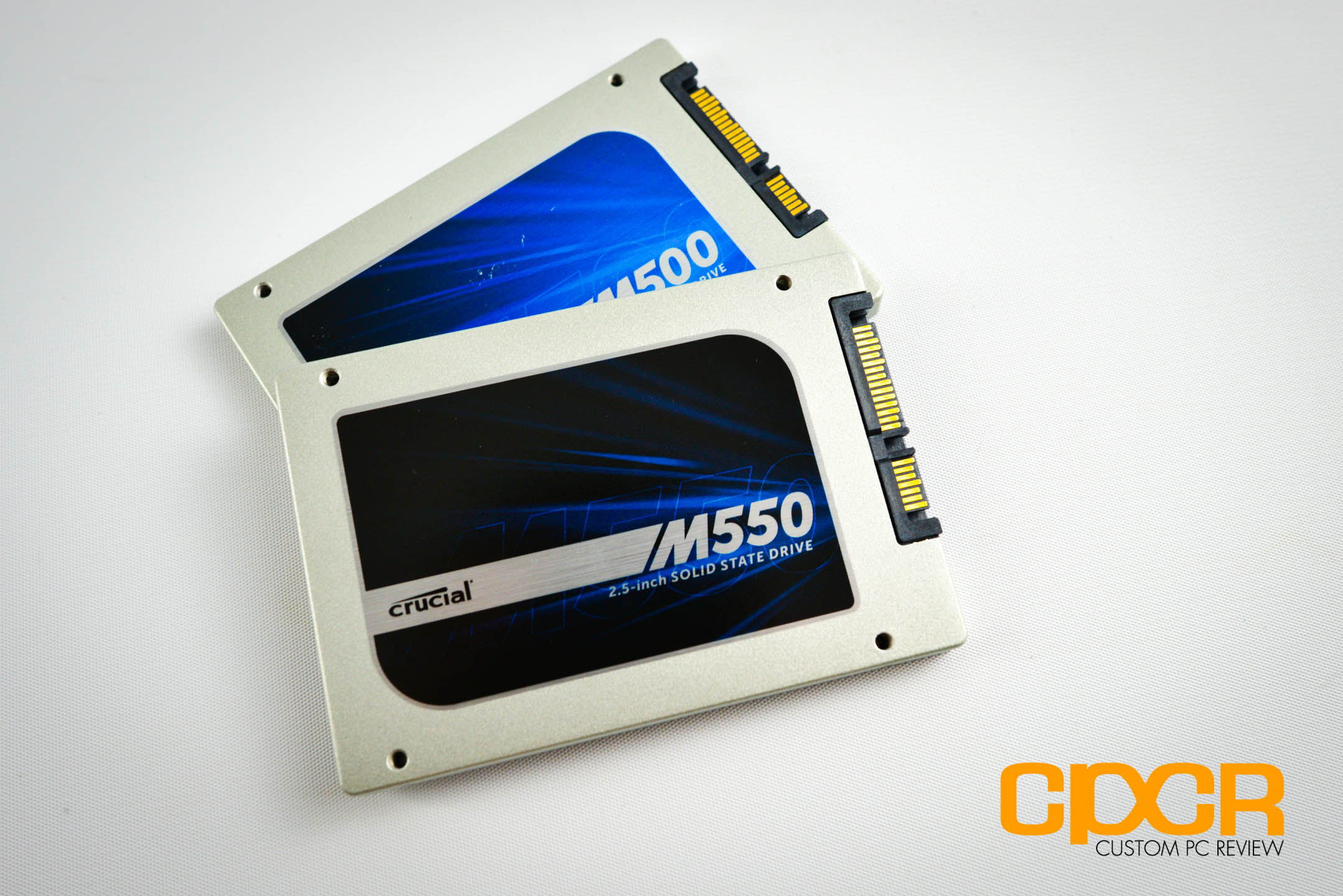
Sounds like a driver issue with your system. Have you tried completely uninstalling the drivers and re-installing them? Either that or a reformat of your system? Often times driver conflicts cause BSODs.
https://www.custompcreview.com/articles/guides/guide-properly-remove-nvidia-amd-ati-gpu-drivers/19972/
I have tried all your instructions before but to no avail. I completely uninstall the driver using different applications like DDU(Display Driver Uninstaller), and also the amd cleanup utility. Then I formatted my pc just to verify if the problem is not on my OS. Same results, I get BSOD with a freshly installed OS, Here is my specs for your information.
Procs: Intel core i3 2100
Mobo: Asrock Z68 Fatal1ty Pro (Updated BIOS)
Ram: G Skill Ripjaws X 1866 8gb (Passed memtest, and windows memory diagnostics)
PSU: Corsair 650W 80+ GOLD
OS: Windows 7 64 bit
Hmm… alright. Go ahead and post a thread on the forums and I’ll see if I can help you there. The comments section of a review is not an appropriate spot for tech support.
http://www.forums.custompcreview.com/